Most beautiful gardens in Florence to visit
At first glance, Florence is a city of stone. However, hiding behind its thick walls and massive buildings lie gardens both public and private, seemingly invisible except from above. Boboli is the first that comes to mind when thinking of Florence’s historical gardens, but there are also many other ones. All of these gardens are proving Florence’s critical role in the diffusion of ideas and grand projects in the field of garden architecture in Italy and Europe. Before listing all my favorite and most beautiful gardens of Florence, let me introduce myself.
My name is Claudia, I have a master’s degree in history of architecture, and specialized in historical gardens. I work as a licensed tour guide in Florence, since more than 10 years. Take a look at my private Florence guided tours!
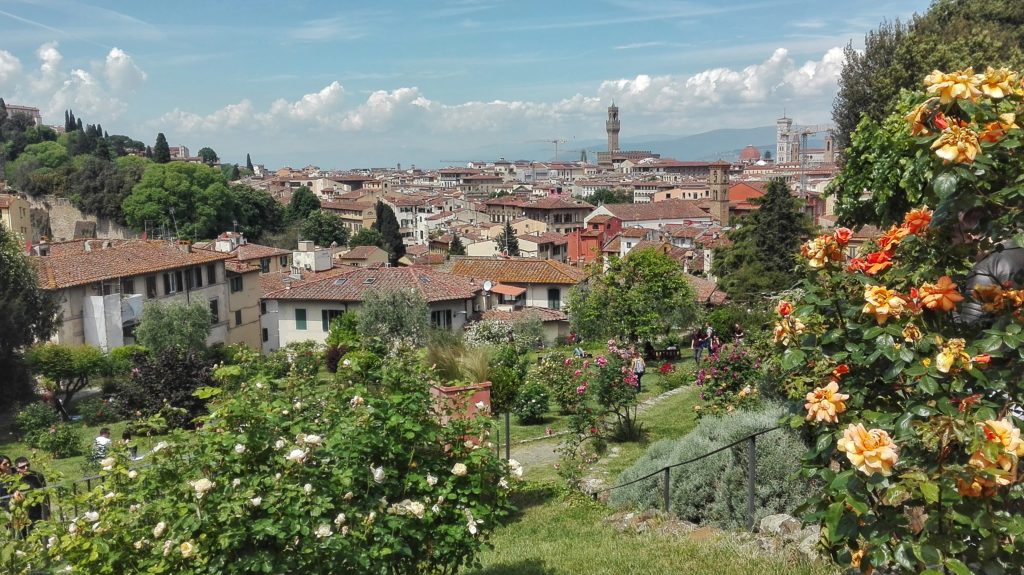
Most beautiful gardens to visit in Florence
First of all I want to remind you that summer in Florence is really hot, with temperatures even above 38 °C (100 °F). Unfortunately, due to global warming, the hot season is getting longer and longer. It can even start in June and last until August.
You will have to take this into account when considering to visit a garden, because you will have to walk outdoors, under the sun, and often on sloping terrain. And due to the opening hours, it’s impossible to take advantage of the very early hours of the morning to visit the gardens when it is not yet too hot.
Having said that, let’s talk about the most beautiful gardens in Florence to visit!
Boboli Gardens
The most famous Renaissance garden in the world is today an open-air museum, which is part of the Pitti Palace complex. Eleanor of Toledo, wife of Cosimo I de’ Medici, commissioned the gardens in 1550. Then the park has been filled with ancient statues, green architectures and archaeological finds from Rome and ancient Egypt, and expanded several times.
One of the things I love most about the Boboli Gardens is the citrus collection that belonged to the Medicis. The plant collection is still here, so it lasted longer than the Medici family! In winter the citrus plants are housed inside the orangery, while from spring to autumn they are found on the artificial island in the center of the large ocean fountain.
Half of the citrus collection is in Boboli, the other half in the garden of Villa di Castello (see below).
The entrance ticket to the Boboli Gardens costs 10 euros and also includes entry to the nearby Bardini Gardens on the same day. There are also combined tickets with Pitti Palace and the Uffizi.
To visit all the Boboli Gardens it takes at least a couple of hours. If you don’t have enough time, skip the second axis (that goes on the right from Pitti Palace). The first axis (central from Pitti) is more important.
- Check out my Boboli Gardens private tour!
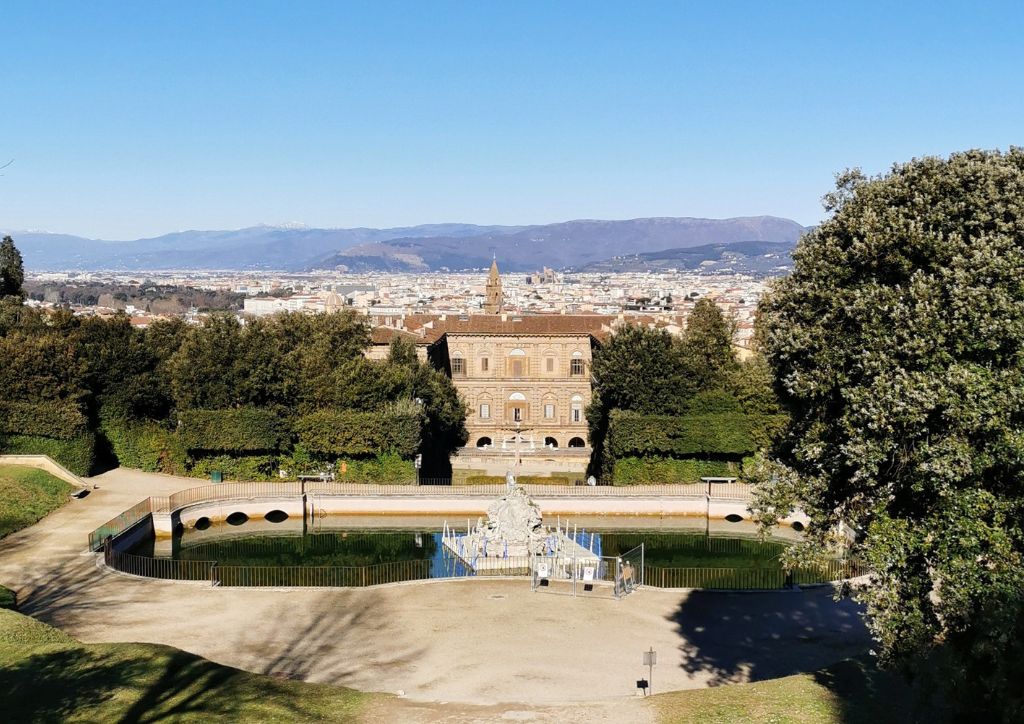
Bardini Gardens
The gardens take their name from Stefano Bardini, a Florentine antiques dealer. In the 19th century he bought two adjacent ancient gardens and transformed them into a magnificent open-air showroom. One of them was a baroque garden from the XVII century, while the other one was an English garden, and you can still clearly see the difference. Among olive trees and roses, Bardini displayed statues and architectural pieces from the past which he then sold to foreign collectors.
The Bardini gardens are known for the gorgeous view of Florence that can be enjoyed from the terrace at the top of the baroque staircase, where there is a café. But above all they are famous for the wisteria pergola, which blooms in spring, turning into a fragrant violet tunnel. Spring is of course the best time to visit this place, when colorful irises are blooming at the sides of the baroque staircase. But actually it’s enjoyable at any time of the year, thanks to the view of the city.
The Bardini Gardens are located on the opposite side of the same hill where the Boboli Gardens are, and can be visited with the same ticket. Each of the two gardens has a secondary entrance near the exit of the other, to shorten the route for those who want to visit both.
- Read more about the Bardini Gardens here.
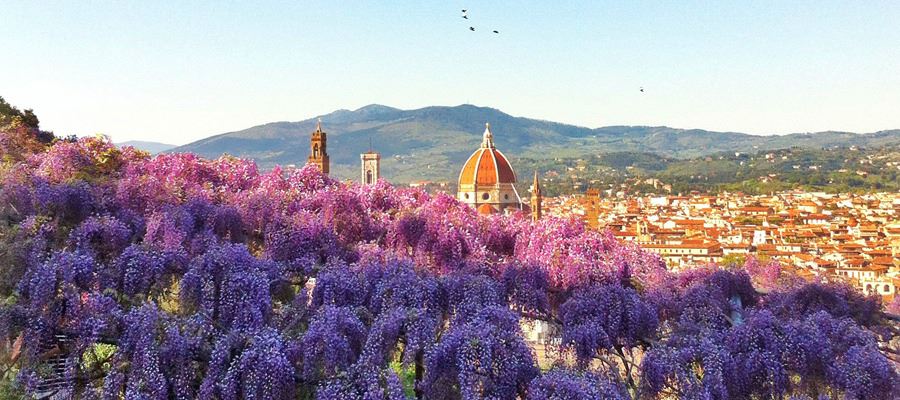
Roses garden
The Roses Garden of Florence is very close to Piazzale Michelangelo, the panoramic terrace with the most beautiful view of the city. It is a public garden with free entry that develops on the side of the hill, and one of the two entrances is located right next to Piazzale Michelangelo, on the left side of it.
As the name suggests, this garden is dedicated to the queens of flowers, roses, and there are hundreds of different species, which bloom from March to October. Roses surround the beautiful view of Florence and the dome of the cathedral. It’s the perfect place to have a picnic!
The Roses Garden is decorated with bronze statues by the Belgian artist Jean-Michel Folon. His sculptures are deamy and fantastic figures popping out from the plants. Sleeping cats, fish-men, birds and the famous suitcase that frames the view of Florence.
- Read more about the Rose Garden!
- Discover more great viewpoints in Florence
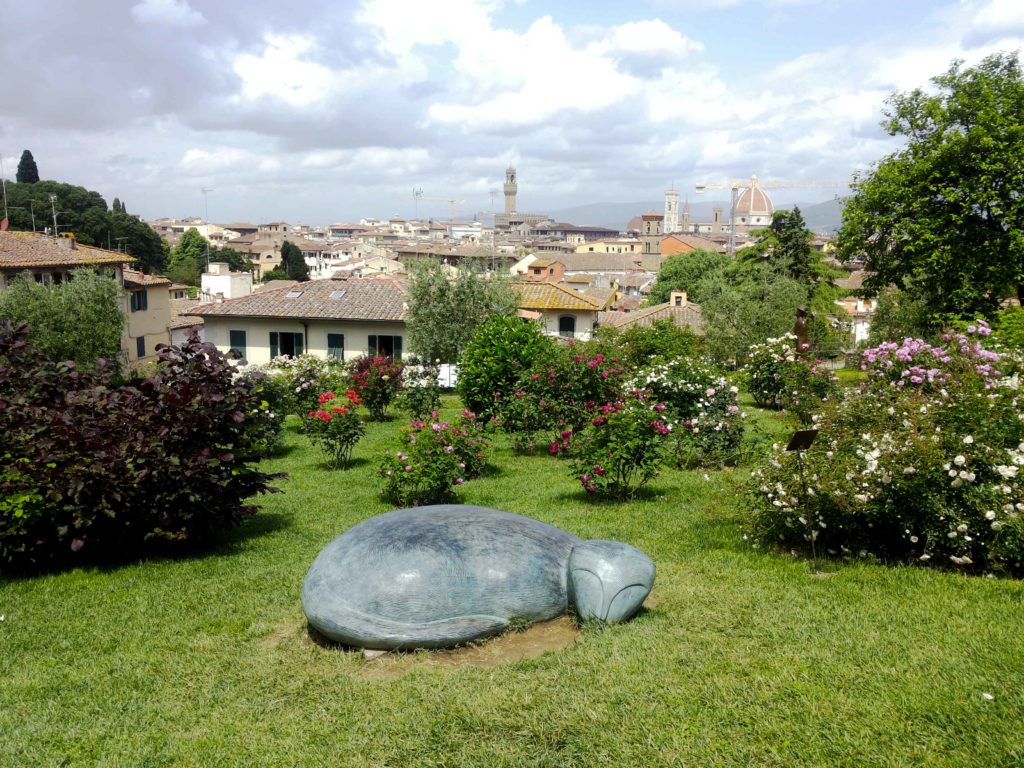
Iris garden
Close to the Roses garden, on the opposite side of Piazzale Michelangelo (the right side), the Iris Garden is the kingdom of irises of every color, shape and species. The reason why Florence has such a garden is because the symbol of the city is a red iris flower on a white background. Even if many ones call it “lily of Florence” it’s not a lily, but an iris.
Since the end of the 1800s there is an international competition for iris collectors and growers, who constantly create new species, which are then planted in the garden.
The Iris garden is only open for 20 days of the year, from April 25th to May 20th, which is for the blooming season of these flowers. Entrance is free, so don’t miss the chance to visit one of the most beautiful garden of Florence, if you are in town at the right time.
- Read more about the Iris Garden in Florence
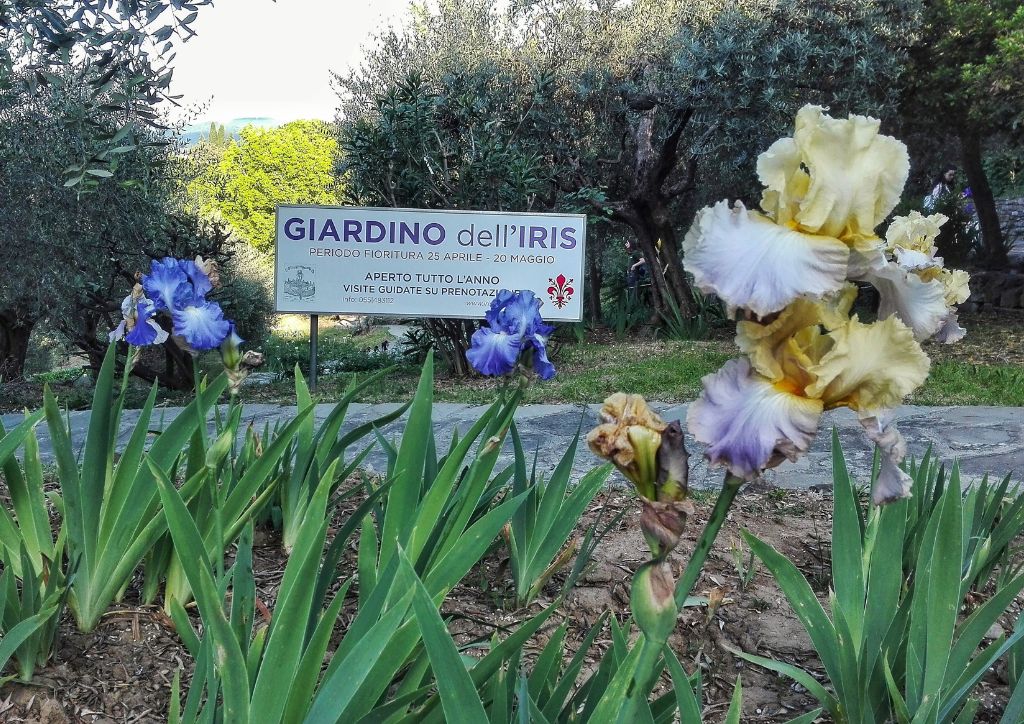
Medicean Villa di Castello
Villa di Castello belonged to the Medici since 1400, but it was in 1500 that Cosimo I had the villa renovated and the wonderful garden created. The garden of Villa di Castello is one of the first Italian Renaissance gardens, and it’s full of symbolic meanings. Its architecture is a green allegory representing Tuscany and celebrating the power of the Medici family.
Even though it has been modified over the centuries, the garden still looks very similar to the original one, designed by Giorgio Vasari in the 16th century, and decorated with statues, fountains and geometrically shaped flowerbeds. Like the grotto decorated with animals, or the monumental statue of Gennaio (January) sculpted by Niccolò Ammannati.
Don’t miss the secret garden, called ortaccio, a small garden surrounded by high walls, located inside the main garden. Here Cosimo III de’ Medici, in the 18th century, cultivated his precious collection of exotic jasmine. Today in the secret garden, in addition to jasmine, aromatic Mediterranean herbs are also grown.
The garden of Villa di Castello houses half of the citrus collection of the Medicis (the other half is in Boboli). Again, the plants are placed inside the orangery in winter, while in spring, summer and fall they are taken outside, inside their traditional Tuscan terracotta pots.
The villa inside houses the Accademia della Crusca, a very important academy that studies the Italian language. Only some rooms can be visited, which are open to visitors only on Wednesdays and Thursdays, by appointment.
Villa di Castello is located outside of the city center, in the neighborhood of Firenze Castello, almost at the border with the neighboring municipality, Sesto Fiorentino. What was once open countryside is now the outskirts of the city. You can get there by public transport by taking the tram line T1.3 and then bus no. 2 or 28.
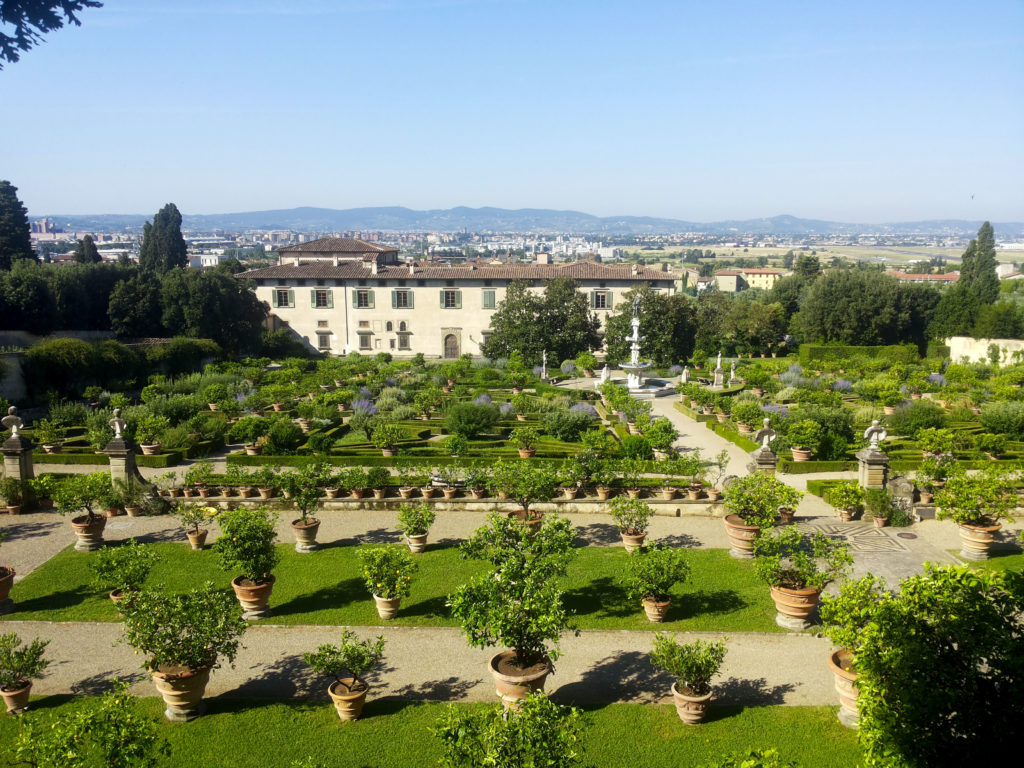
Medicean Villa La Petraia
Villa la Petraia is right next to Villa di Castello, at a walking distance. The garden is a big park that spans over three levels, and that opens up to a stunning view of the city and its surroundings.
The garden is a mix of different scenarios such as Italian parterre, pools, fountains, and even an English garden. Although much of the original architectural shape is gone, is still one of the most beautiful gardens in Florence. Especially in spring and summer time, when flowers are blooming into bright patches of colors.
You can also visit the interior of the Medici Villa, with guided tours lasting half an hour. The interiors, however, are not original from the Medici era, they have been renovated several times in the following centuries. But are still very enjoyable if you like old, fancy mansions.
Directions to get to Villa la Petraia are the same of Villa di Castello.
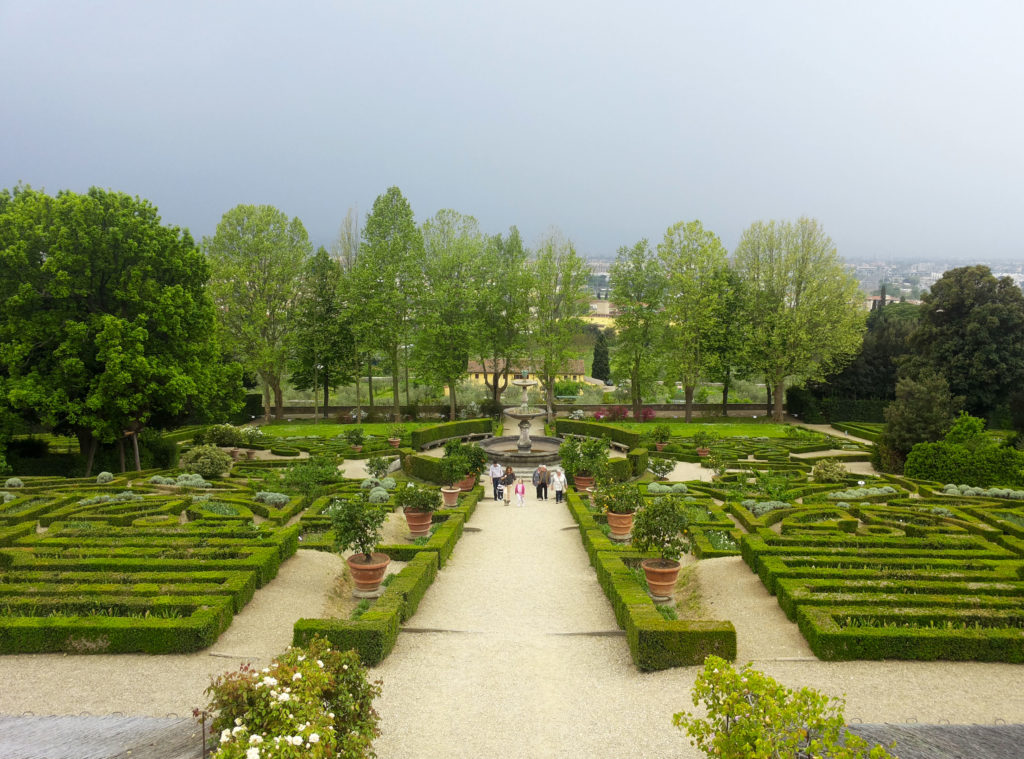
Torrigiani Gardens
Giardino Torrigiani is a hidden gem in the heart of the city, the largest private garden in Florence. It still belongs to the same family since centuries, the Torrigiani, one of the oldest noble Florentine families. The garden is a grand romantic park in an English style, filled with exotic plants, a Neo-gothic astronomical observation tower, statues in Egyptian stile and many other secret wonders.
The garden is only open on reservation, and the guided tours are lead by members of the Torrigiani family. A chance to visit the garden is staying at AdAstra boutique hotel, that has a terrace with a wonderful view on the garden.
Stibbert Garden and villa
On via Bolognese, almost at the city limits, the is one of the most bizarre and fascinating museums of Florence, the Stibbert Museum. Frederick Stibbert was a British-Italian collector and dealer of antiquities, with a true passion for the Middle Ages. He had a Neo-Gothic style villa built that looks like a medieval castle, and which today houses the Stibbert museum and its many collections. The garden extends around the villa, as eclectic and bizarre as the building.
The garden of Villa Stibbert is dotted with curiosities such an Egyptian temple, a neoclassical one, a Neo-Renaissance orangery, and many other interesting artworks and little buildings. It’s a peaceful oasis where I love to take do a picnic or read a book on the grass.
The Stibbert museum has an entrance ticket, but the access to the garden is free and independent from the museum.
To get there, take the tram line T1.3, get off at Muratori stop and then walk (uphill) for about 15 minutes.
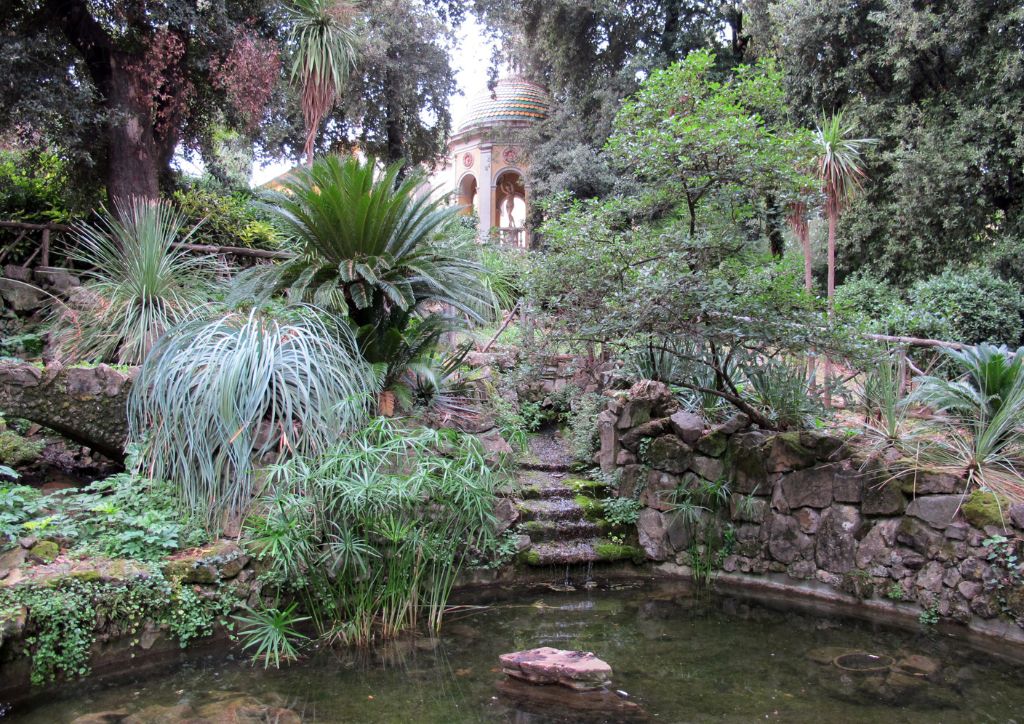
Orto dei Semplici botanical garden
Founded by Cosimo de’ Medici in 1545, this is the third oldest botanical garden in the world, and today is part of the Natural History Museum of Florence. The Orto dei Semplici garden has impressive collections of both edible and medical plants. And also some themed gardens, from zen garden to the Italian one. There are also some ancient trees such gymnosperms and other plants which are considered living fossils of the botanical world.
The botanical Garden Orto dei Semplici is centrally located in via Pier Antonio Micheli, very close to piazza San Marco and the Accademia Gallery museum.
Giardino dell’Orticoltura
Close to the Stibbert Museum, the Giardino dell’Orticoltura (horticulture garden) is a large public park much loved by Florentines. The park lies on the side of a hill, and has two entrances, one at the top and one at the bottom.
Near the entrance at the top there is a bizarre sculpture of a dragon all covered in a mosaic of colored scales.
In the lower part of the park, on the plain, there is a beautiful steel greenhouse fro 1880, where plant-themed events and markets are often held. The Horticulture Garden hosts twice a year an important market and exhibition of plants and flowers.
I hope this post was helpful! If you have other tips about the most beautiful gardens to visit in Florence, leave a comment and share your recommendations with other travelers and readers!